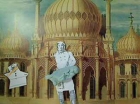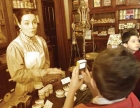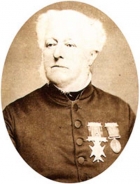Local history
Local history has become much more prominent in the most recent National Curriculum with a prominent place at each key stage. It has not always been well done even if children often enjoy it. Good local history involves careful planning ideally through an enquiry approach drawing on historical concepts and a range of sources. Local history provides great opportunities for practical work inside and outside the classroom. It is not something done in isolation but should link with other history so that children see the links between their direct world and the wider context.
-

Assessment and Progression without levels
ArticleClick to view -

Implementing the 2014 curriculum in Year 2
ArticleClick to view -

Using the back cover image: Sandbach Crosses - an Anglo-Saxon market cross
ArticleClick to view -

Place-names and the National Curriculum for History
ArticleClick to view -

Curriculum planning: How to write a new scheme of work for history
ArticleClick to view -

Churches as a local historical source
ArticleClick to view -

The world on the wall: exploring diversity on Hadrian's Wall
ArticleClick to view -

Local history and literacy using written (and other) sources
ArticleClick to view -

Urban spaces near you
ArticleClick to view -

Museums, schools and creativity: How learning can be enhanced
ArticleClick to view -

Geosong: a transition project
ArticleClick to view -

Case Study: Creative exploration of local, national and global links 1650
ArticleClick to view -

Chronology and local history: Year 6
ArticleClick to view -

William Brookes and the Olympic Games
ArticleClick to view -

Shropshire's Secret Olympic History
ArticleClick to view -

Local History and the 2012 Olympics
ArticleClick to view -

The History around us: Local history
ArticleClick to view -

Learning to engage with documents through role play
ArticleClick to view -

'Doing Local History' through maps and drama
ArticleClick to view -

Introducing local history: the Fusehill Workhouse Project
ArticleClick to view

